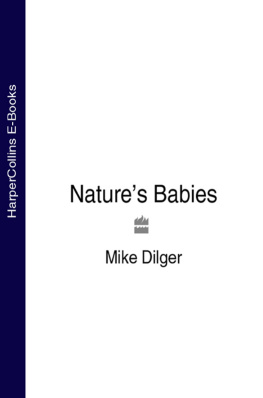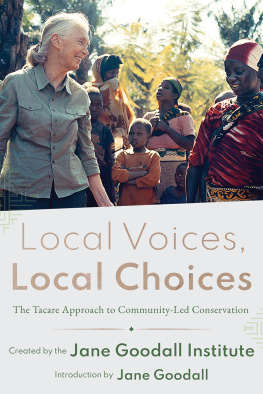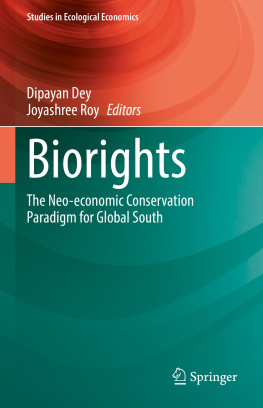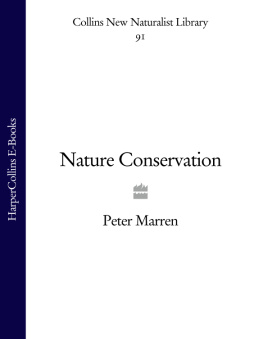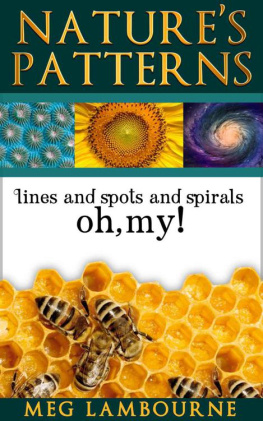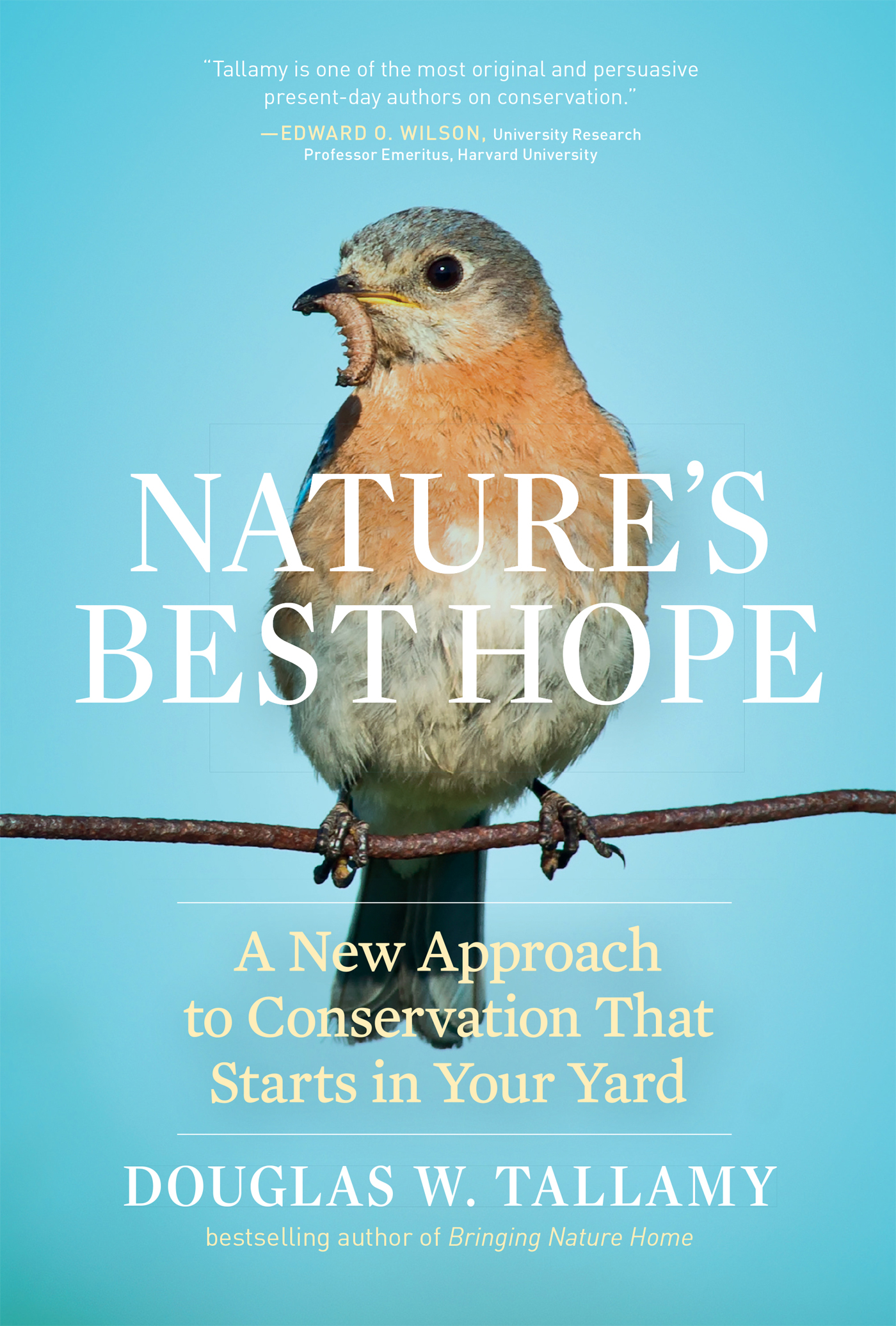Doug Tallamy is a professor in the Department of Entomology and Wildlife Ecology at the University of Delaware, where he has authored 95 research publications and has taught insect related courses for 39 years. Chief among his research goals is to better understand the many ways insects interact with plants and how such interactions determine the diversity of animal communities. His book Bringing Nature Home was awarded the 2008 Silver Medal by the Garden Writers Association. The Living Landscape, co-authored with Rick Darke, was published in 2014. Dougs new book Natures Best Hope will be available February 2020. Among his awards are the Garden Club of America Margaret Douglas Medal for Conservation and the Tom Dodd, Jr. Award of Excellence, and the 2018 AHS B.Y. Morrison Communication Award.
DOUGLAS W. TALLAMY
CONTENTS

Introduction

in 1903, with the state of arizona on the verge of mining the Grand Canyon, President Theodore Roosevelt stood on the canyons lip, gazed out over its unique magnificence, and uttered the five words that would save it: Leave it as it is. Unfortunately, because only 5 percent of the land in the lower forty-eight United States is now in anything close to a pristine, self-sustaining ecological condition, weve lost the opportunity to save most of our country from such development. Ninety-five percent of the country has been logged, tilled, drained, grazed, paved, or otherwise developed. Our rivers have been straightened and dammed (damned?), and several no longer reach the sea. Our air has been polluted, our aquifers pumped nearly dry, and our climate changed for centuries to come. We have purposefully imported thousands of species of plants, insects, and diseases from other lands, which have decimated many native plant communities on which local food webs depend, and we have carved the natural world into tiny remnants, each too small and too isolated to support the variety of species required to sustain the ecosystems that support us.
I could go on, but this is not a book about the pox we have delivered upon the environment and thus upon all of our houses. It is a book about a cure for that poxa cure that will require small efforts by many people but that will deliver enormous physical, psychological, and environmental benefits to all. This may sound like hyperbole, but we have learned that restoring the natural world benefits not only other species, but Homo sapiens as well, in ways no one imagined only a few years ago.
Despite the current political climate, I believe we are on the cusp of a new environmental ethic, one that will (must) be adopted, not just in blue states, but in red states as well; not just in the United States, but worldwide; not just by tree-hugging environmentalists, but by everyone. It is quite possible that historians will call the coming decades The Age of Ecological Enlightenment. I am not a soothsayer or a visionary; I am an ecologist who makes this claim with confidence, because it is the only option left for Homo sapiens if we want to remain viable in the future. In his 1949 conservation classic, A Sand County Almanac, Aldo Leopold wrote, There are some who can live without wild things and some who cannot. He was referring to our emotional connection to the natural world, a connection that fewer and fewer people seem to have these days. The message I have tried to convey in this book is that, whether we like nature or not, none of us will be able to live for long in a world without it.
I have found that most people fall into one of three groups: they like plants, they like animals, or they like neither. I have attempted to address all three groups in this book. My goal is to convince people that we will lose most of our plants if we lose most of our animals, and we will lose all of those animals if we dont take care of our plants. For people who dont care for or about the flora and fauna around them, the hardest group of all to engage, I have also done my best to explain why we will lose humans if we dont preserve the plants and animals that keep our ecosystems healthy and sustaining.
We havent always thought about our individual impacts on the local environment, and consequently those impacts have been negative more often than not. Today, however, we must develop a new mindfulness about how our everyday actions affect the physical and living world around us. In this book I argue that we can no longer tolerate actions that degrade our local environment; there are simply too many of us for the earth to sustain the cumulative impact. A neutral impact is not good enough, either, for we no longer have the option of leaving things in their current degraded state. We must now act collectively to put our ecosystems back together again. What is needed is nothing less than a cultural transformation: rather than acting as if we were independent of nature, we need to behave a little more reverently or respectfully toward nature, as if we were the product and beneficiary of a vibrant natural world, rather than its master.
Today most people live in what I call the great suburban/urban matrix, and we hardly interact with the natural world. Unfortunately, our ignorance of nature has led to a dangerous indifference about its fate. The local disappearance of once-common plants and animals does not bother us because we have grown up with no knowledge of these species, and we cannot imagine why they are important to us. We do not teach our children that plants and animals actually generate the life support systems we all require. Plants produce our oxygen, clean our water, and delay its journey to the salty sea. They store atmospheric carbon that would otherwise wreak even more havoc with our climate. Plants build our topsoil and hold it in place, and they prevent floods when we leave enough of them in our landscapes. Animals, in turn, provide pest control services and pollinate not just our crops but nearly 90 percent of all plant species. We are living off of the ecological interest that was generated by a healthy ecological bank account long ago, but we are eating up the principal of that account at a steady and alarming rate. Agriculture lands, cities, and the vast suburban tracts that surround them have replaced natural areas in so many places that not enough nature remains to generate the natural capital on which our lives depend.
Gardening is like cooking. It is tempting to cook only with the goal of achieving great taste, with no thought of healthy eating, but that often results in tasty concoctions so full of fat, sugar, and salt that they are deadly in the long run. Similarly, it is tempting to garden only for beauty, without regard to the many ecological roles our landscapes must perform. All too often, such narrow gardening goals result in a landscape so low in ecological function that it drains the vitality from the surrounding ecosystem.



